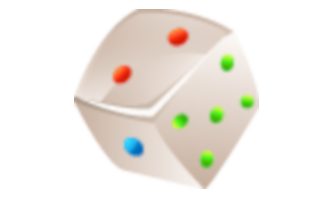Plant Processes
Science, Grade 6
Plant Processes
Study Guide

Plant Processes
Flash Cards

Plant Processes
Quiz

Plant Processes
Worksheets

Plant Processes
Games

Study Guide Plant Processes Science, Grade 6
❮
1
/
4
❯
PLANT PROCESSES Photosynthesis In order for an organism to be alive, it needs energy. The energy is needed to complete certain functions that keep it alive. The meals that we eat daily supply us with energy for our cells, and it takes energy to create those meals. Organisms like plants and algae obtain energy in another way. They use light from the sun to produce energy in a process known as photosynthesis. Photosynthesis is a process powered by sunlight that uses carbon dioxide and water to produce oxygen and food. The photosynthesis process is very complex. There are two stages of photosynthesis: catching light from the sun and using the energy to produce sugars. First Stage of Photosynthesis: The process begins in the leaves or other green parts of a plant. Energy is caught by a structure within a plant cell called the chloroplast. © Copyright NewPath Learning. All Rights Reserved. Permission is granted for the purchaser to print copies for non-commercial educational purposes only. Visit us at www.NewPathLearning.com.
It is the chloroplasts that give plants their famous green color. This color comes from the pigment, chemicals that absorb light, inside of the chloroplast. The pigment within the chloroplast is called chlorophyll. A chloroplast may also contain yellow and orange pigment, but they are usually hidden by the green color of chlorophyll. These other colors can be seen in the fall season. Lesson Checkpoint: What part of the plant gives it the green color and also aids in photosynthesis? Second Stage of Photosynthesis: The energy that is caught by the chloroplasts is then used to power the second stage of photosynthesis. In this stage, energy is used by the cell to produce sugars. Water (H2O) and carbon dioxide (CO2) are materials needed to begin the second stage. Water is brought in through the roots and transported up to the leaves. Carbon dioxide is brought in by the stomata, the openings that control when gases come into and are let out of the leaf. <image similar to the one found at: http://www.vcbio.science.ru.nl/public/Final- Images/PL_Thumb_jpg/PL_Thumbs251-300/PL0275_Thumb.jpg> The two materials enter the chloroplast once they enter the cell. Lesson Checkpoint: How do the stomata and roots assist during photosynthesis? © Copyright NewPath Learning. All Rights Reserved. Permission is granted for the purchaser to print copies for non-commercial educational purposes only. Visit us at www.NewPathLearning.com.
The Chemistry of Photosynthesis: The process requires six molecules of water (H2O) and six molecules of carbon dioxide (CO2). These molecules undergo chemical changes and oxygen (O2) and sugars like glucose (C6H12O6) are produced. The oxygen is let go through the stomata and the sugars are used to power cell functions. The process of photosynthesis can be shown in a chemical equation. Sources of Energy All of the organisms on our Earth receive their energy from one source. We use it everyday and without it we would not be here. All energy comes from the sun. It starts by being turned into sugar and oxygen in photosynthesis. Then, other organisms eat the plants to gain energy. Lastly, other organisms gain energy from feeding on the organisms that originally ate the plants. We will learn more about food chains and food webs in Topic 25. Plant Responses: Tropism When you think of a plant you probably think of a living organism that is autotrophic and does not move around unless the wind or other weather causes its movement. Plants actually do respond to their environment in something known as a tropism. Tropism is a plant’s growth response to a particular stimulus. Have you ever experimented with a plant by having it contained in a box that does not allow sunlight except for a small hole on one side of the box. You will have noticed that the plant grows towards that hole in order to receive more sunlight. © Copyright NewPath Learning. All Rights Reserved. Permission is granted for the purchaser to print copies for non-commercial educational purposes only. Visit us at www.NewPathLearning.com.
This is an example of a tropism. There are three important types of stimuli that plants will respond to. They are gravity, touch, and light. Gravity: A plants responds to gravity by growing the roots down into the ground or the stems into the sky. Touch: A Venus fly trap will spring closed if an insect triggers a small hair that detects sensitive movements. Light: The next time that you are near a sunflower notice where the face of the sunflower is facing. The sunflower will always face towards the sun during the daylight hours. Plant Hormones These tropisms are caused by the production of hormones within the plant. Hormones are chemicals that have an affect on the growth and responses of an organism. The hormones that are produced inside of plants control many different functions, including growth of roots, leaves, stems, seeds, fruit and the shedding of leaves. © Copyright NewPath Learning. All Rights Reserved. Permission is granted for the purchaser to print copies for non-commercial educational purposes only. Visit us at www.NewPathLearning.com.
